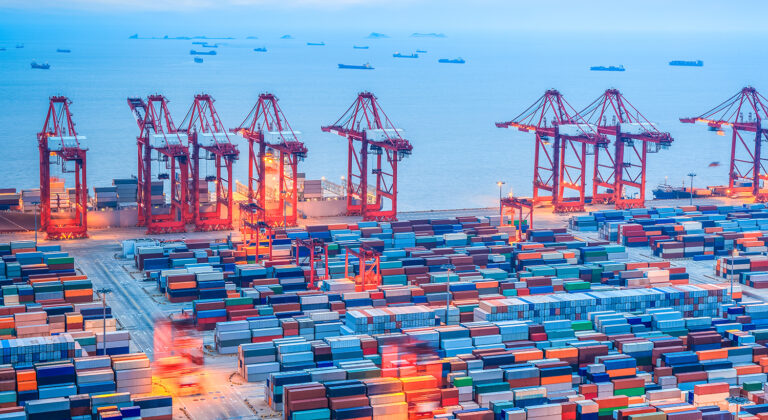The recent spike in Covid-19 cases in China – and the resulting congestion around its ports – will have a domino effect on supply chains around the world. But it will take time – six weeks or longer – for this shockwave to reach European markets, according to Michael Wax, CEO & Co-founder of Forto, a provider of digitised freight forwarding and supply chain solutions.
“The biggest problem for most businesses right now is not with international carriers, but a lack of production,” said Wax. “Lockdowns mean labour isn’t available to keep factories running, or to move goods to China’s ports. Many suppliers currently have well-stocked warehouses in the European Union, which will help to cushion the effect on consumers for the time being. But if these lockdowns continue, we may start to see reduced product availability in the coming months.”
Wax also revealed that the impact of this also depends on the primary mode of transportation used by a business. “The bottleneck is not the ships: ports and shipping are, currently, generally functioning, whereas the air freight sector is seeing a larger volume of cancellations,” he noted.
“To mitigate the impact of this, we’re advising customers to allow for greater shipping times and to invest more time in planning, if they have suppliers that are operational. Now more than ever, it remains important to be flexible and make the most of real-time insights to inform supply chain strategies.”
Tom Fairbairn, supply chain expert and distinguished engineer at the real-time data company, Solace, concurred with Wax that the consequences of events in China will be far-reaching and global, especially when it comes to an already struggling supply chain.
“Looking at any given supply chain, you have producers of information and consumers of information,” noted Fairbairn. “It is an end-to-end eco-system in itself. Supply chain data will have to be agile, nimble and flexible to counter shortages and disruption. Legacy approaches to data such as batch processing, where data is updated on an overnight basis, simply won’t cut it.”
Real-time, fully integrated digitised supply chains are therefore necessary to keep disruptive impacts to a minimum. Event tracking will therefore be critical, and event-driven architecture (EDA) addresses this by making sure that the data that drives IT systems is a series of ‘events’ that can move in real-time as the corresponding event in the real world takes place. “This is the type of system that event-driven architecture can bring to the supply chain.”
An event-driven supply chain means that information can travel from point A to point B as-it-happens. “This helps businesses react to events and detect problems faster, reduce administrative overheads and automate communication. Without this seamless exchange between buyers and suppliers, the supply chain crisis will continue to wreak havoc.”







